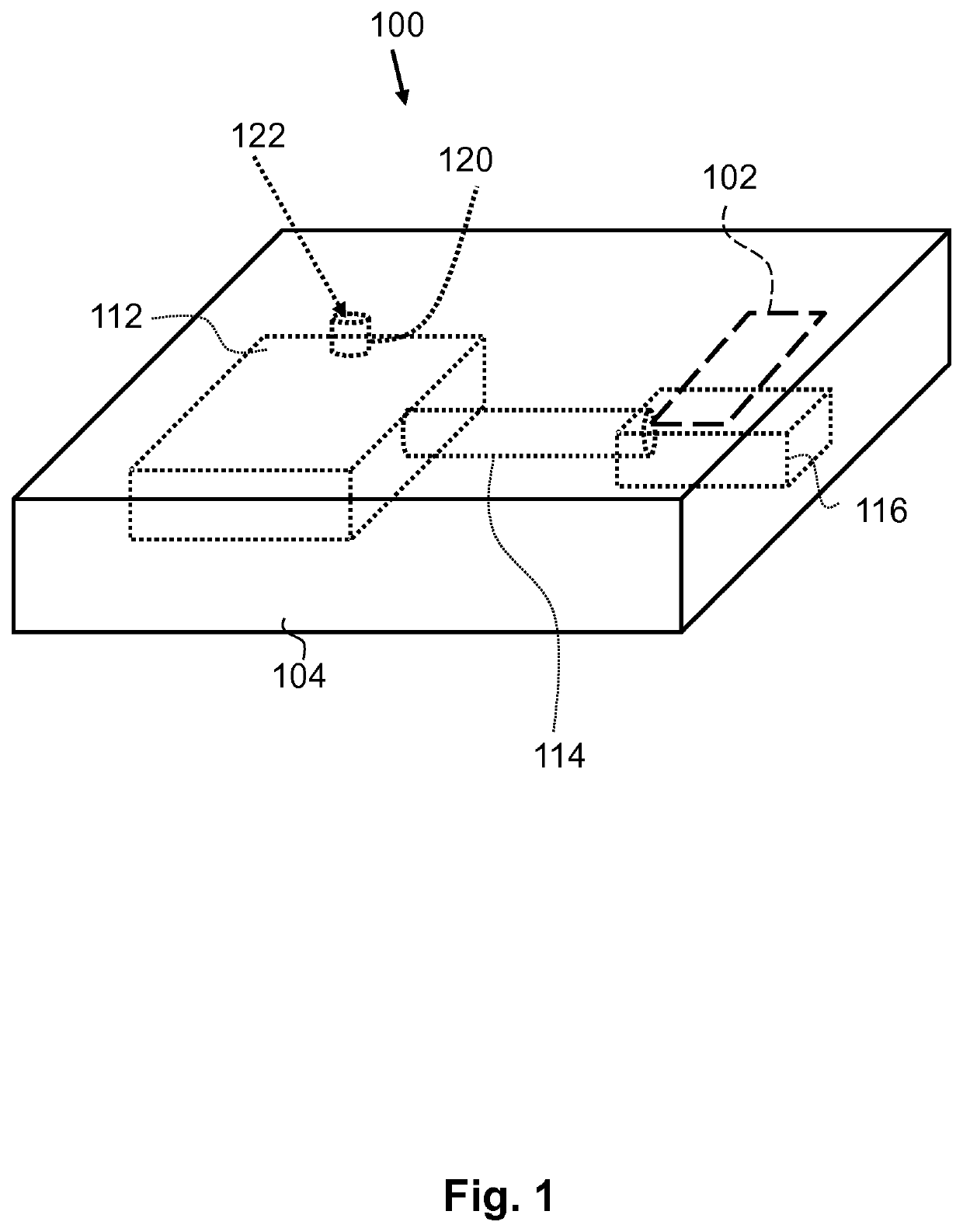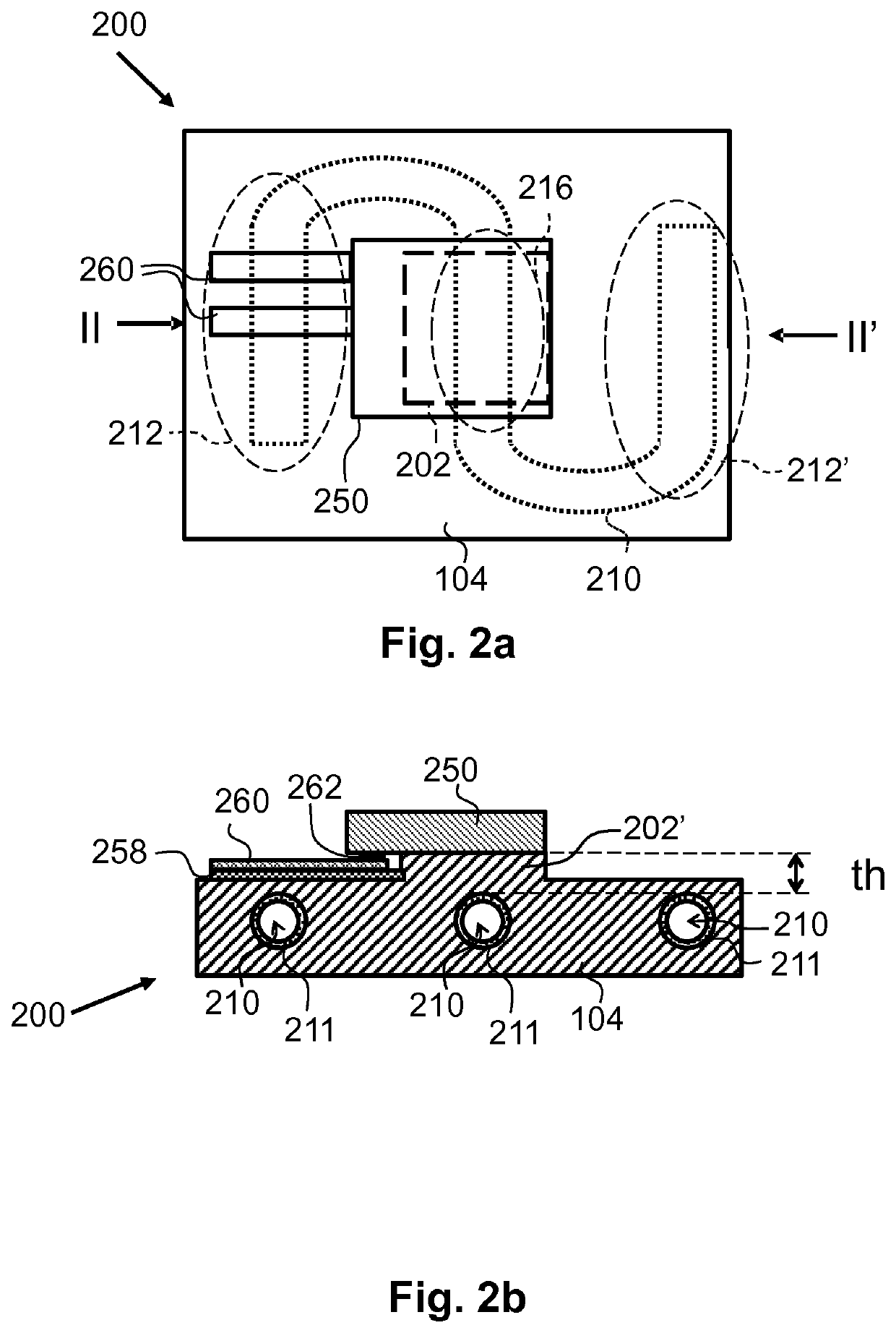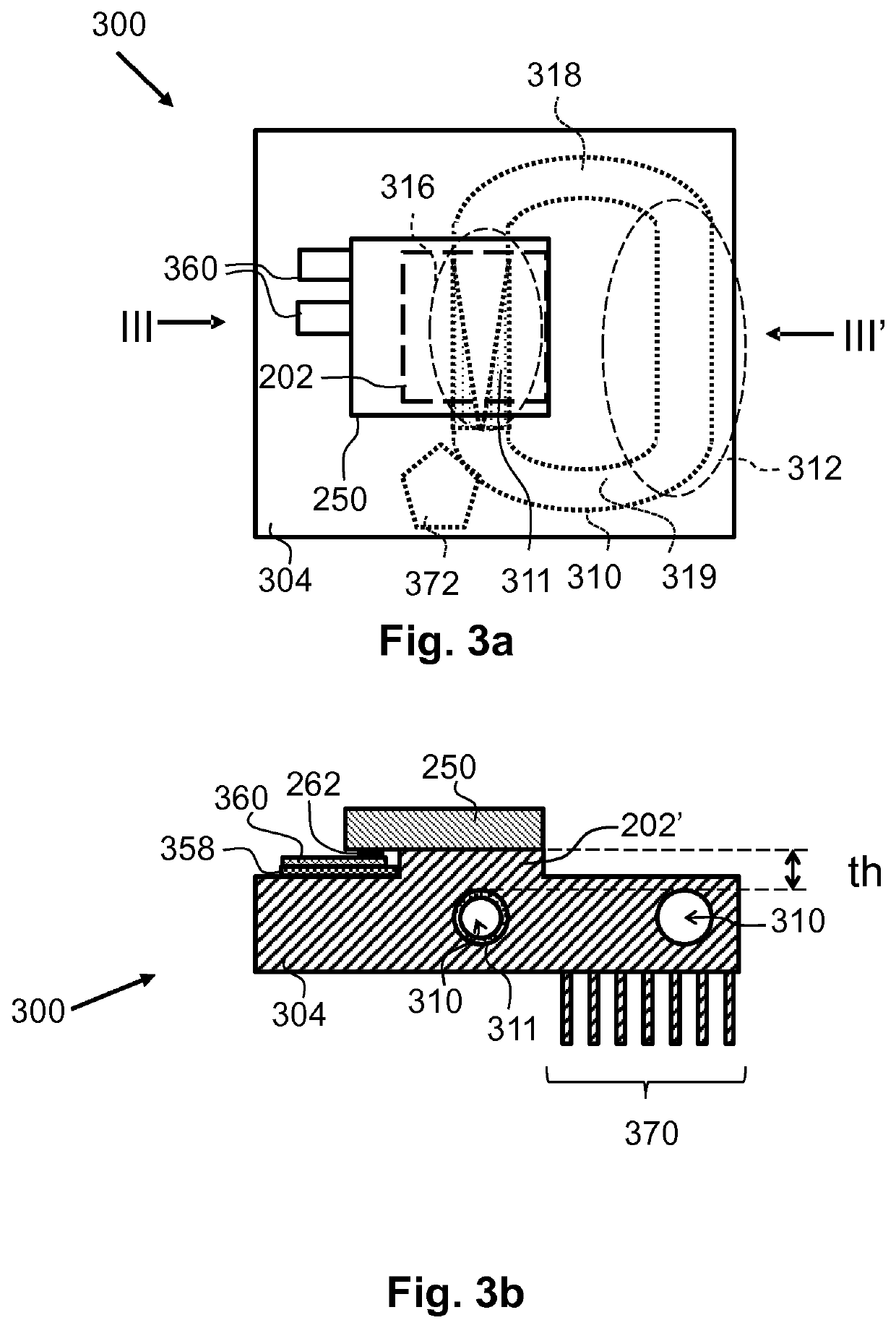Light source cooling body, light source assembly, a luminaire and method to manufacture a light source cooling or a light source assembly
a cooling body and light source technology, applied in the field of cooling bodies, can solve the problems of inability to manufacture cooling fins, limited cooling capacity of heat dissipation devices, and non-functional light sources, and achieve the effect of better cooling solutions
- Summary
- Abstract
- Description
- Claims
- Application Information
AI Technical Summary
Benefits of technology
Problems solved by technology
Method used
Image
Examples
Embodiment Construction
[0062]FIG. 1 schematically shows a light source cooling body 100 according to the invention. The light source cooling body 100 comprises a homogeneous body 104 of a single material that is thermally conductive. Inside the homogeneous body 104 is provided a hollow space that is formed in the example of FIG. 1 by spaces 112, 114 and 116. The hollow space may optionally comprise a small channel 120 to the outside surface of the light source cooling body 100 such that at the outside surface of the light source cooling body 100 is provided a sealable opening that may be used to pump the hollow space empty and provide a cooling material into the hollow space. The walls of the hollow space are formed by the material of the homogeneous body 104. Thus, no additional materials are provided in between the hollow space and the homogeneous body 104. Space 116 is configured as an evaporator in which a cooling material present in a liquid phase and which is evaporated when heat is received by the ...
PUM
 Login to View More
Login to View More Abstract
Description
Claims
Application Information
 Login to View More
Login to View More - R&D
- Intellectual Property
- Life Sciences
- Materials
- Tech Scout
- Unparalleled Data Quality
- Higher Quality Content
- 60% Fewer Hallucinations
Browse by: Latest US Patents, China's latest patents, Technical Efficacy Thesaurus, Application Domain, Technology Topic, Popular Technical Reports.
© 2025 PatSnap. All rights reserved.Legal|Privacy policy|Modern Slavery Act Transparency Statement|Sitemap|About US| Contact US: help@patsnap.com



